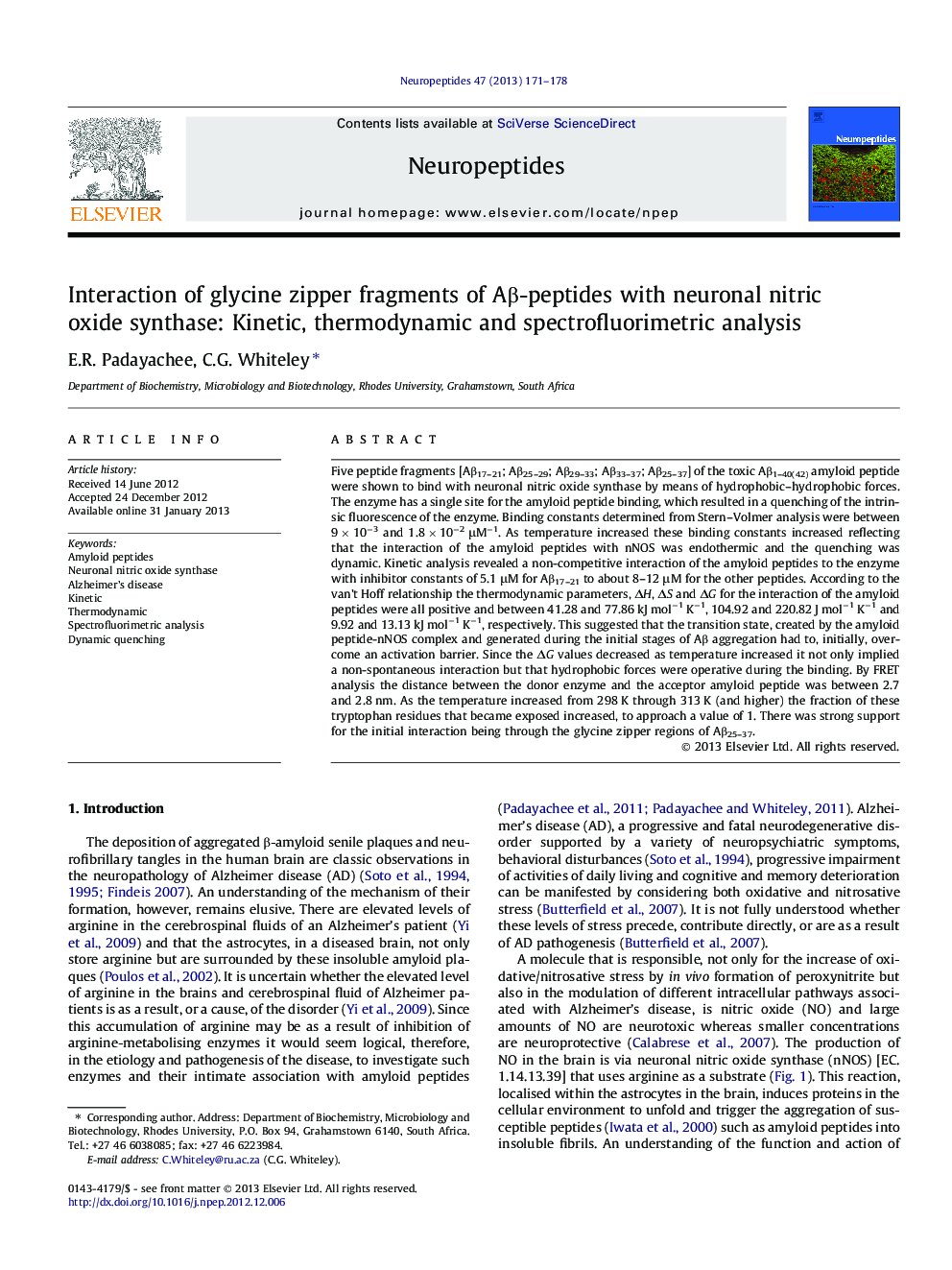| Article ID | Journal | Published Year | Pages | File Type |
|---|---|---|---|---|
| 5904285 | Neuropeptides | 2013 | 8 Pages |
Abstract
Five peptide fragments [Aβ17-21; Aβ25-29; Aβ29-33; Aβ33-37; Aβ25-37] of the toxic Aβ1-40(42) amyloid peptide were shown to bind with neuronal nitric oxide synthase by means of hydrophobic-hydrophobic forces. The enzyme has a single site for the amyloid peptide binding, which resulted in a quenching of the intrinsic fluorescence of the enzyme. Binding constants determined from Stern-Volmer analysis were between 9 Ã 10â3 and 1.8 Ã 10â2 μMâ1. As temperature increased these binding constants increased reflecting that the interaction of the amyloid peptides with nNOS was endothermic and the quenching was dynamic. Kinetic analysis revealed a non-competitive interaction of the amyloid peptides to the enzyme with inhibitor constants of 5.1 μM for Aβ17-21 to about 8-12 μM for the other peptides. According to the van't Hoff relationship the thermodynamic parameters, ÎH, ÎS and ÎG for the interaction of the amyloid peptides were all positive and between 41.28 and 77.86 kJ molâ1 Kâ1, 104.92 and 220.82 J molâ1 Kâ1 and 9.92 and 13.13 kJ molâ1 Kâ1, respectively. This suggested that the transition state, created by the amyloid peptide-nNOS complex and generated during the initial stages of Aβ aggregation had to, initially, overcome an activation barrier. Since the ÎG values decreased as temperature increased it not only implied a non-spontaneous interaction but that hydrophobic forces were operative during the binding. By FRET analysis the distance between the donor enzyme and the acceptor amyloid peptide was between 2.7 and 2.8 nm. As the temperature increased from 298 K through 313 K (and higher) the fraction of these tryptophan residues that became exposed increased, to approach a value of 1. There was strong support for the initial interaction being through the glycine zipper regions of Aβ25-37.
Keywords
Related Topics
Life Sciences
Biochemistry, Genetics and Molecular Biology
Endocrinology
Authors
E.R. Padayachee, C.G. Whiteley,
